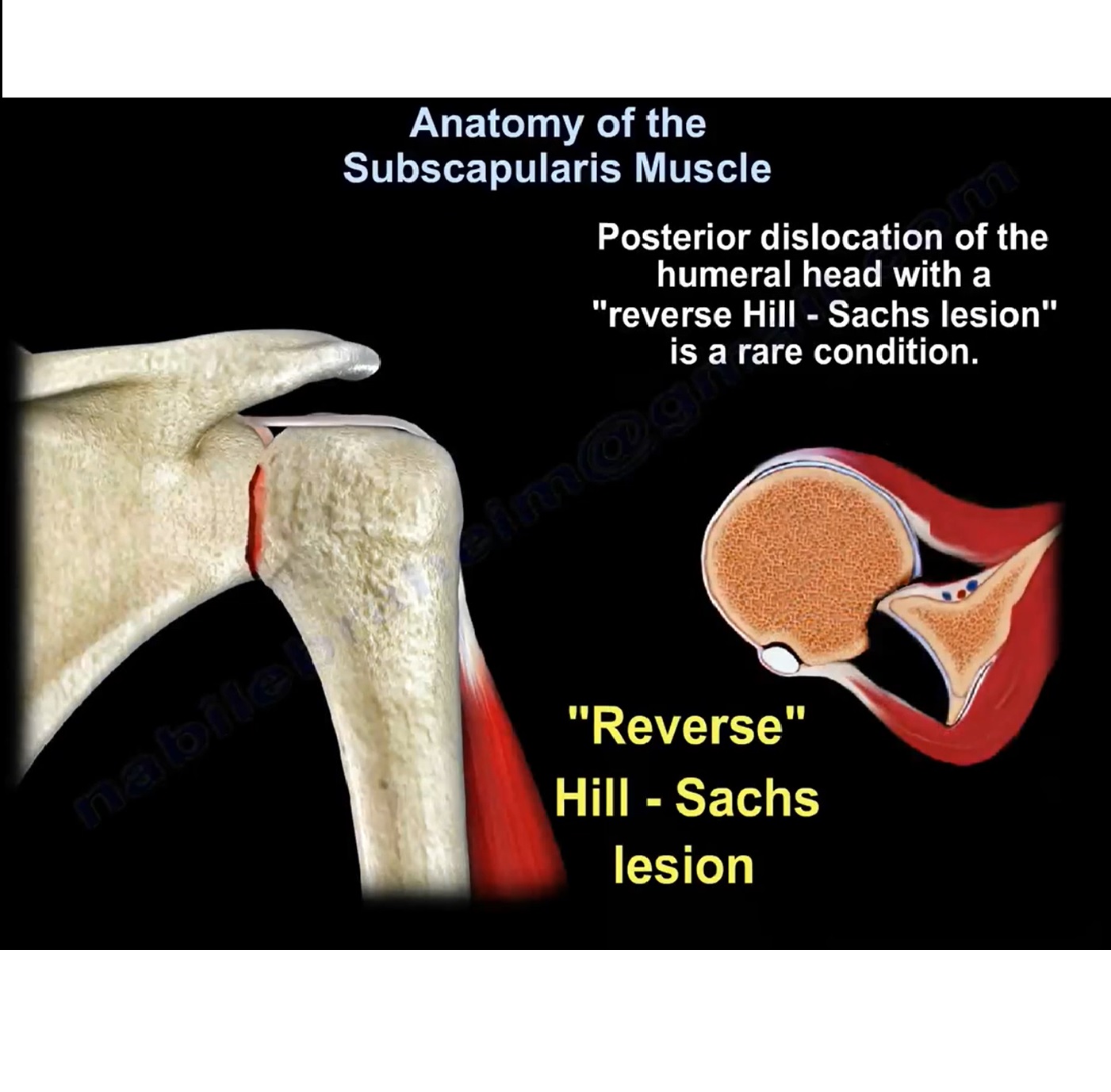Courtesy: Prof Nabil Ebraheim, University of Toledo, Ohio, USA
Anatomy of the Subscapularis muscle
- The Subscapularis muscle is a large muscle that originates on the anterior surface of the scapula and lies in front of the shoulder.
- The muscle passes to its insertion into the humeral head underneath the arch formed by the coracoid process and the combined origins of the coracobrachialis muscle and short head of the biceps.
- The Subscapularis muscle is the largest of the four rotator cuff muscles and it provides about 50% of the total cuff strength.
- The Subscapularis muscle inserts into the lesser tuberosity of the humerus while the other rotator cuff muscle have an insertion into the greater tuberosity.
- The Subscapularis muscle acts as a dynamic stabiliser of the humeral head and aids in lifting across the chest.
- The function of the Subscapularis muscle is to adduct and rotate the arm medially.
- At the insertion of the Subscapularis tendon into the humerus lies the transverse humeral ligament.
- The long head of the biceps tendon lies within the bicipital group and is held in place by the transverse humeral ligament.
- When a complete rupture of the Subscapularis tendon occurs, the transverse humeral ligament may also become torn causing medial dislocation of the biceps tendon from the bicipital groove.
Radiological Examination
- The tears of the Subscapularis tendon may be diagnosed by using MRI or Ultrasound.
Ultrasound Examination
- With ultrasound imaging, the probe is placed transversely over the bicipital groove to identify the groove and the biceps tendon while the arm is in a neutral position.
The arm is then externally rotated to view the Subscapularis tendon.
Diagnosis of Subscapularis rupture
- Tears are not uncommon and can be missed
- Can be either acute or chronic
- Can also be partial or complete
Patient will have :
- Pain
- Anterior shoulder swelling
- Decreased range of motion
- Weakness of internal rotation
- Increased external rotation of the shoulder compared to the other shoulder
- Clinical diagnostic tests for Subscapularis tendon rupture
Lift-off-test
- The patient places the hand behind their back at the lumbar level and lifts the hand away from the back when the patient has an intact Subscapularis tendon.
- If the patient is unable to lift the hand off of the lower back, then a tear of the Subscapularis tendon is suspected
Lift- off- lag test
- The examiner will hold the patients hand away from the back at the lumbar region and let go. The patient will be unable to keep the hand away from the back if the tendon is torn.
Belly- press test
- The patient presses the palm of the hand against the abdomen with the wrist in a neutral position. This is an example of an intact Subscapularis tendon.
- A positive sign for the belly press test occurs if the patient is unable to press his body without wrist volar flexion or the elbow falling posteriorly.
Treatment
- Tear of the Subscapularis tendon
1.Complete tear
- Surgical repair
- Repair may be either open or arthroscopic
- Biceps tenodesis during repair is associated with improved outcomes.
- Biceps tenodesis is usually done if the biceps is involved in the process, otherwise subluxation of the biceps will stress and fail the repair
2.Chronic muscle tear
- Pectoralis major muscle transfer is the procedure of choice
Posterior dislocation of the humeral head with a “reverse hill – sachs lesion” is a rare condition.
- The condition can be repaired after reduction of the dislocation with the Mclauglin procedure utilising the Subscapularis tendon if the lesion is between 20-40% of the humeral head
- The Subscapularis tendon is used to fill the reverse hill- sachs lesion using suture anchors or screws inserted in the humeral head defect.
- The screws are inserted into a portion of the lesser tuberosity that is attached to the Subscapularis.
- The Subscapularis muscle is supplied by the upper and lower Subscapular nerves.
- The upper and lower Subscapular nerves originate from the posterior cord of the brachial plexus.
- The Subscapular artery which is the largest branch of the axillary artery, supplies the Subscapularis muscle.

Leave a Reply